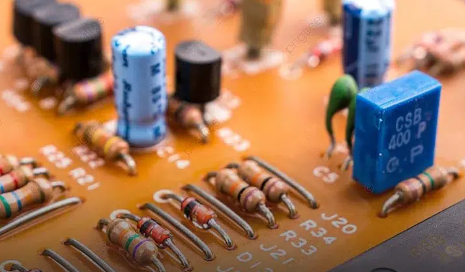What’s the difference between the transistor and thyristor ?
Introduction of transistor and thyristorA transistor is a type of triode that consists of an emitter, a base, and a collector. Its main role is to amplify electrical signals and control currents. The transistor works by controlling the collector current by controlling the base current, thereby realizing functions such as current amplification and switching control. Transistors are commonly used in circuits such as amplifiers, switches, oscillators, etc. in electronic circuits. Transistors are mainly divided into bipolar transistors (BJT) and field effect transistors (FET).

A thyristor is a triac that controls the on/off and direction of current. The working principle of thyristor is to control the main electrode current by controlling the gate current, so as to realize functions such as current control and voltage regulation. Thyristors are commonly used in circuits such as voltage regulation, current control, and DC power conversion in AC circuits.
Therefore, transistors and thyristors are both semiconductor devices, but their working principles and application scenarios are different, and it is necessary to choose which device to use according to the specific circuit design and requirements.
Characteristics of transistor and thyristor
Transistors and thyristors are semiconductor devices with the following characteristics:
Characteristics of transistorsAmplification function: Transistors can amplify electrical signals, making weak signals larger, thereby realizing signal transmission and processing.
Switching function: The transistor can be used as a switch to control the on and off of the circuit to achieve control and regulation of the circuit.
High reliability: The transistor has a long life, high reliability, not easy to be damaged, and has a long service life.
Small size: The transistor is small in size and light in weight, making it easy to integrate and assemble.
Characteristics of thyristorStrong controllability: The thyristor can control the main current by controlling the gate current to achieve current control and regulation.
Bidirectional conduction: The thyristor can conduct current in both directions and can control and regulate forward and reverse currents.
High reliability: The thyristor has a long life, high reliability, not easy to be damaged, and has a long service life.
Small size: The thyristor is small in size and light in weight, making it easy to integrate and assemble.Therefore, both transistors and thyristors have the advantages of high reliability and small size, but they are different in functions and application scenarios. The choice of which device to use needs to be based on the specific circuit design and requirements.
Difference between transistor and thyristor
Although both transistors and thyristors are semiconductor devices, their working principles and application scenarios are different. The specific differences are as follows:
The working principles are different
A transistor is a triode, consisting of an emitter, a base and a collector, and its main function is to amplify electrical signals and control current; while a thyristor is a bidirectional thyristor that can control the on-off and direction of current.
The application scenarios are different
Transistors are usually used in amplifiers, switches, oscillators and other circuits in electronic circuits; while thyristors are usually used in voltage regulation, current control, DC power conversion and other circuits in AC circuits.
The control methods are different
The control method of the transistor is to control the collector current by controlling the base current; while the control method of the thyristor is to control the main current by controlling the gate current.
The voltage and current characteristics are different
The voltage and current characteristics of a transistor are nonlinear, while the voltage and current characteristics of a thyristor are linear.
Different structures are different
The structure of a transistor is relatively simple, usually consisting of a PN junction and a control electrode. The control electrode of a transistor can be the base or gate, etc. The voltage of the control electrode can control the current flow of the PN junction, thereby controlling the switching of the circuit. The structure of a thyristor is relatively complex and usually consists of four or more PN junctions and control electrodes. The control electrode of the thyristor can be a gate electrode, a trigger electrode or a control electrode. The voltage of the control electrode can control the on and off of the PN junction, thereby controlling the switching of the circuit.
ConclusionTherefore, transistors and thyristors are different in terms of working principles, application scenarios, control methods, structure and voltage and current characteristics. It is necessary to choose which device to use based on the specific circuit design and requirements.
在线留言询价
- 一周热料
- 紧缺物料秒杀
| 型号 | 品牌 | 询价 |
|---|---|---|
| TL431ACLPR | Texas Instruments | |
| MC33074DR2G | onsemi | |
| CDZVT2R20B | ROHM Semiconductor | |
| RB751G-40T2R | ROHM Semiconductor | |
| BD71847AMWV-E2 | ROHM Semiconductor |
| 型号 | 品牌 | 抢购 |
|---|---|---|
| STM32F429IGT6 | STMicroelectronics | |
| ESR03EZPJ151 | ROHM Semiconductor | |
| BP3621 | ROHM Semiconductor | |
| IPZ40N04S5L4R8ATMA1 | Infineon Technologies | |
| BU33JA2MNVX-CTL | ROHM Semiconductor | |
| TPS63050YFFR | Texas Instruments |
- 周排行榜
- 月排行榜
AMEYA360公众号二维码
识别二维码,即可关注


请输入下方图片中的验证码:






















